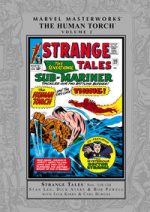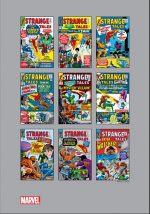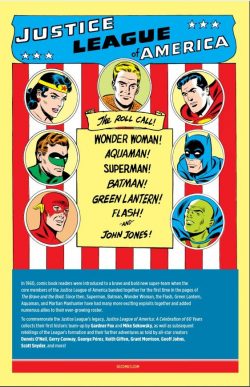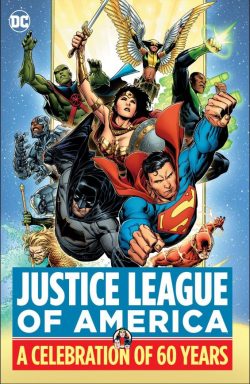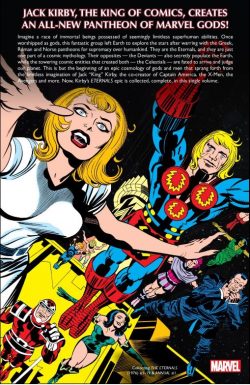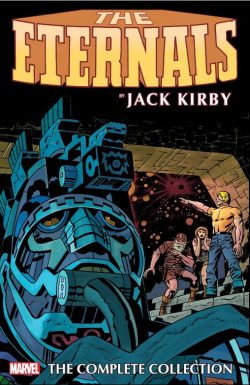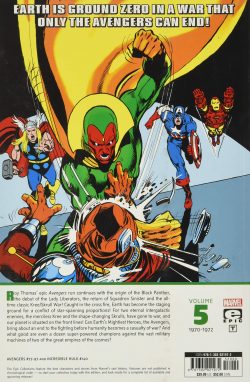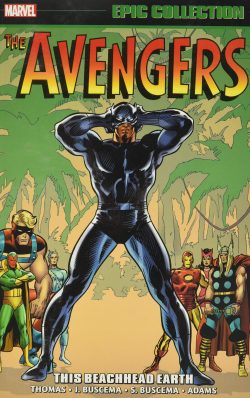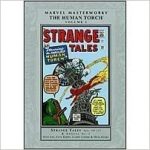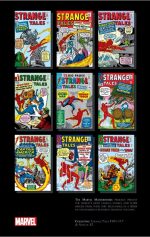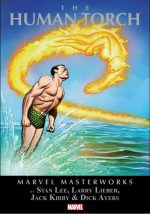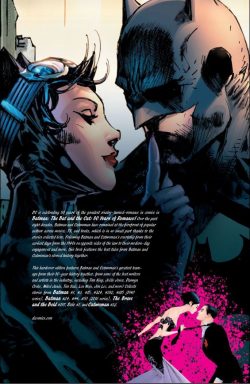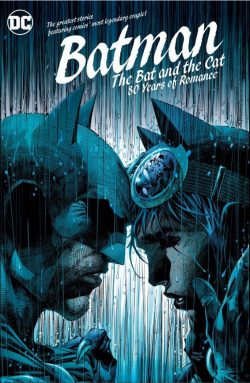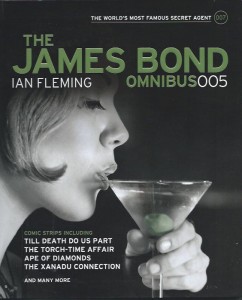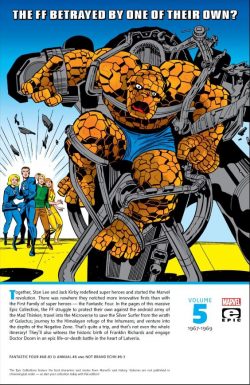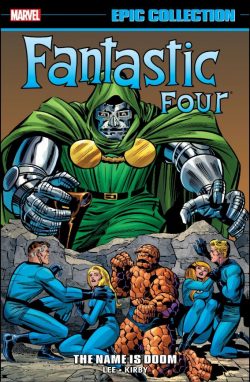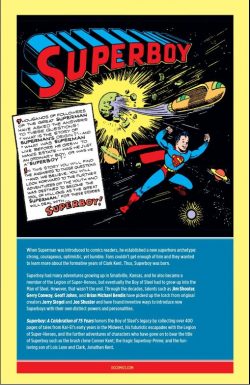
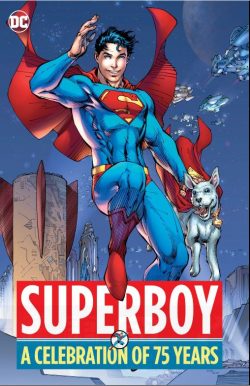
By Jerry Siegel & Joe Shuster, Bill Finger, Otto Binder, Robert Bernstein, Jim Shooter, Paul Levitz, Gerry Conway, Elliot S! Maggin, Geoff Johns, Karl Kesel, Brian Michael Bendis, Peter J. Tomasi, Patrick Gleason, John Sikela, Curt Swan, Al Plastino, George Papp, James Sherman, Joe Staton, Phil Jimenez, Jerry Ordway, George Pérez, Ivan Reis, Tom Grummett, Dusty Abell, Matthew Clark, Francis Manapul, Viktor Bogdanovic, Jonathan Glapion & various (DC Comics)
ISBN: 978-1-4012-9951-4 (HB)
Win’s Christmas Gift Recommendation: Superb Supercharged Stocking Stuffer… 9/10
Superman is the initiating act and spark that created the superhero genre. Without him we would have no modern gods to worship. However, less than a decade after his launch, creators Jerry Siegel & Joe Shuster also devised a concept nearly as powerful and persistent: the sheer delight of a child no adult could dominate or control…
The ever-reinventing DC Universe has hosted many key entertainment concepts that have done much to bring about the vibrant comics industry of today. This stunning compilation – part of a dedicated series reintroducing and exploiting the comics pedigree of veteran DC icons and concepts – is available in hardback and digital formats and offers an all-too-brief sequence of snapshots detailing how one of the most beguiling came to be, and be and be again…
Collecting material from More Fun Comics #101; Superboy #10, 89; Adventure Comics #210, 247, 271, 369-370; DC Comics Presents #87; Infinite Crisis #6; Superboy and the Legion of Super-Heroes #233, 259; Adventures of Superman #501; Superboy (volume 2) #59; Teen Titans (volume 3) #24, Adventure Comics (volume 2) #2; Young Justice (volume 3) #3 and Superman (volume 4) #6, 10-11, and introducing the many characters who have earned the soubriquet of the Boy of Steel, the landmark moments are all preceded by a brief critical analysis by Karl Kesel, outlining the significant stages in their development.
It begins with Part I – 1945-1961: A Boy and His Dog …
After the Man of Tomorrow had made his mark as Earth’s premier champion, his originators took a long look and reasoned that a very different tone could offer a fresh look. What would it be like for a fun-loving lad who could do literally anything?
The answer came in More Fun Comics #101 (January 1945) as Jerry Siegel & Joe Shuster crafted ‘The Origin of Superboy!’, fleshing out doomed Krypton and baby Kal-El‘s flight and giving him accessible foster parents and a childhood full of fun and incident…
The experiment was a huge hit. The lad swiftly bounced into the lead slot of Adventure Comics and in 1949, his own title, living a life set twenty years behind his adult counterpart.
Cover-dated October 1950, Superboy #10 originated ‘The Girl in Superboy’s Life’, wherein Bill Finger & John Sikela introduced Smallville newcomer Lana Lang, who immediately saw resemblances between Clark Kent and the Boy of Steel and set out to confirm her suspicions…
Despite battling crooks, monsters, aliens, scandal and the girl next door, Superboy enjoyed a charmed and wonderful life which only got better in Adventure Comics #210 (March 1955), as Otto Binder, Curt Swan & Sy Barry introduced ‘The Super-Dog from Krypton!’ Although waywardly mischievous and dangerously playful, Krypto heralded a wave of survivors from the dead world and made Superboy feel less lonely and unique. Every boy needs a dog…
The next tale here is a certified landmark. Adventure Comics #247 (April 1958) was at the cusp of the Silver Age costumed character revival, as Otto Binder & Al Plastino introduced a concept that would reshape comics fandom: ‘The Legion of Super-Heroes!’
The many-handed mob of juvenile universe-savers debuted in a Superboy tale wherein three mysterious kids invited the Smallville Sensation to the future to join a team of metahuman champions inspired by his historic feats. The throwaway concept inflamed public imagination and after a slew of further appearances throughout Superman Family titles, the LSH eventually took over Superboy’s lead spot in Adventure for their own far-flung, quirky escapades, with the Caped Kryptonian reduced to one of the crowd…
Before then though, Adventure Comics #271 (April 1960) revealed ‘How Luthor Met Superboy!’ Siegel & Plastino united to depict how teenaged scientist Lex Luthor and Superboy became fast friends, before the genius became deranged when a laboratory fire extinguished by the Caped Kryptonian caused Lex to lose his hair. Enraged beyond limit, the boy inventor turned his talents to crime…
Robert Bernstein & George Papp then introduced ‘Superboy’s Big Brother!’ in Superboy #89 (June 1961) in which an amnesiac, super-powered space traveller crashes in Smallville, speaking Kryptonese and carrying star-maps written by the Boy of Steel’s long-dead father…
Jubilant, baffled and suspicious in equal amounts, the Superboy eventually, tragically discovers ‘The Secret of Mon-El’ by accidentally exposing the stranger to a lingering, inexorable death, before desperately providing critical life-support by depositing the dying alien in the Phantom Zone until a cure could be found…
Anybody who regularly reads these reviews know how crotchety and hard-to-please I can be. Brace yourself…
The next section – Part II – 1968-1980: The Space Age – concentrates on Superboy’s Legion career. That’s not the problem because those are great stories, well deserving of their own book, but they’re wasted here while the Boy of Steel’s adventures from this period are completely neglected. That’s work by the likes of Frank Robbins, Binder, Jim Shooter, Curt Swan, Bob Brown, Wally Wood and others we don’t get to see. Poor editorial decision, that…
Calm again, so let’s see how the Boy of Tomorrow fares one thousand years from now…
During this period the youthful, generally fun-loving and carefree Club of Champions peaked; having only just evolved into a dedicated and driven dramatic action series starring a grittily realistic combat force in constant, galaxy-threatening peril.
Although now an overwhelming force of valiant warriors ready and willing to pay the ultimate price for their courage and dedication, science itself, science fiction and costumed crusaders all increasingly struggled against a global resurgence in spiritual questioning and supernatural fiction…
The main architect of the transformation was teenaged sensation Jim Shooter, whose Legion of Super-Hero scripts and layouts (generally finished and pencilled by the astoundingly talented and understated Curt Swan) made the series accessible to a generation of fans growing up with their heads in the Future. Ultimately, however, as tastes and fashions shifted, the series was unceremoniously ousted from its ancestral home and full-length adventures to become a truncated back-up feature in Action Comics. Typically, that shift occurred just as the stories were getting really, really good and truly mature…
Here tense suspense begins with Adventure Comics #369’s (June 1968) and ‘Mordru the Merciless!’(Shooter, Swan & Jack Abel) as the Legion is attacked by their most powerful enemy, a nigh-omnipotent sorcerer the entire assemblage only narrowly defeated once before.
A sneak attack shatters the team and only four escape, using a time bubble to flee to the remote and archaic time-period where Superboy lived. With him come Mon-El, (freed from the Phantom Zone to become a Legion stalwart), Shadow Lass and Duo Damsel – the last remnants of a once-unbeatable team.
Mordru’s magic is stronger though and even the time-barrier cannot daunt him…
Disguised as mere mortals, the fugitive Legionnaires’ courage shines through. When petty gangsters take over Smallville, the teen heroes quash the parochial plunderers and opt to return to the 30th century and confront Mordru, only to discover he’s found them first…
The saga concludes in #370 and ‘The Devil’s Jury!’ wherein the band escape and hide in plain sight by temporarily wiping their own memories to thwart the Dark Lord’s probes. Against appalling odds and with only Clark’s best friend Pete Rossand Insect Queen Lana Lang to aid them, the heroes’ doomed last stand only succeeds because Mordru’s overbearing arrogance causes his own downfall.
Then, when the exhausted fugitives got back the future, they joyously learn that Dream Girl and benign sorceress White Witch have undone the deluded Dark Lord’s worst atrocities…
Since that time the fortunes and popularity of the Legion have perpetually waxed and waned, with their future history tweaked and overwritten, retconned and rebooted over and over again to comply with editorial diktat and popular fashion. After disappearing from the newsstands, the team returned as Guests in Superboy, before eventually taking over the title. Deju Vu, much?
From November 1977, Superboy and the Legion of Super-Heroes #233, sees the Kryptonian join his teammates to thwart ‘The Infinite Man Who Conquered the Legion!’: an extra length blockbuster battle by Paul Levitz, James Sherman & Bob Wiacek, after which issue #259 (January 1980) drops Superboy and the… to become Legion of Super-Heroes #259, subsequently ending an era.
‘Psycho War!’ by Gerry Conway, Joe Staton & Dave Hunt sees the time-lost teen targeted by a deranged war veteran using futuristic trauma weapons, forcing his legion chums to mindwipe Kal-El and return him to his original time forever…
In the mid-1980s, DC’s editorial hierarchy felt their vast 50-year continuity was stopping them winning new readers. The solution was a colossal braided-mega series to streamline, redefine and even add new characters to the mix.
The worlds-shattering, reality-altering bombast of Crisis on Infinite Earths resulted in such spectacular commercial success, those movers-&-shakers must have felt more than justified in revamping a number of their hoariest icons for their next fifty years of publishing. As well as Superman, Flash, and Wonder Woman, many moribund and directionless titles were reconsidered for a radical revision. It didn’t all go to plan…
The background on a new Boy of Steel is covered in the essay and tales comprising Part III 1985-2006: Dark Reflection, which opens with two stories from DC Comics Presents # 87 (November 1985) by Elliot S! Maggin, Swan & Al Williamson.
In ‘Year of the Comet’ Superman of Earth-1 meets and mentors teen Clark Kent from an alternate world previously devoid of superheroes and alien invaders, after which ‘The Origin of Superboy-Prime’ exposes the crucial differences that would make Earth Prime’s Last Son of Krypton so memorable…
Events culminated in ‘Touchdown’ by Geoff Johns, Phil Jimenez, Jerry Ordway, George Pérez, Ivan Reis, inkers Andy Lanning, Oclair Albert Marc Campos, Drew Geraci, Sean Parsons, Norm Rapmund, Art Thibert, from issue #6 of mega event Infinite Crisis (May 2006). Teen Clark had evolved into Superboy-Prime – one of the most sadistic and unstoppable monsters in DCU history – but here he met his end battling another kid calling himself Superboy…
That hero gets his own out-of-chronology section: Part IV 1993-2019: The New Kid detailing how he grew out of another different publishing landmark.
Post-Crisis on Infinite Earths, Superman was stripped-down and back to basics, grittily re-imagined by John Byrne, and marvellously built upon by a succession of immensely talented comics craftsmen, resulted in some genuine comics classics.
Most significant was a 3-pronged story-arc which saw the martyrdom, loss, replacement and inevitable resurrection of the World’s Greatest Superhero in a stellar saga which broke all records and proved that a jaded general public still cared about the venerable, veteran icon of Truth, Justice and the American Way.
The dramatic events also provided a spectacular springboard for a resurgent burst of new characters who revitalised and reinvigorated more than one ailing franchise over the next decade, all exploding from braided mega-saga “Reign of the Supermen†which introduced a quartet of heroes each claiming the mantle of Superman (Don’t panic: the Real Deal Man of Steel returned too!).
The final contender for the S-shield cropped up in Adventures of Superman #501. ‘…When He Was a Boy!’ (Kesel, Tom Grummett & Doug Hazlewood) reveals the secret history of a brash and cocky kid wearing an adaptation of the Man of Tomorrow’s outfit and claiming to be a clone of the deceased hero, recently escaped from top secret bio-factory Cadmus.
After alienating everybody at the Daily Planet, the horny, inexperienced juvenile latches onto ambitious journalist – and hottie – Tana Moon, falling under the spell of corrupt media mogul Vinnie Edge. Soon the kid is fighting crime live on TV to boost ratings…
Blending fast action with smart sassy humour, the clone Superboy was a breakout hit running for years, and gradually infiltrating the established Superman Family. A key moment came in Superboy (volume 2) #59 – by Kesel, Dusty Abell, Dexter Vines – as a virtual ‘Mission to Krypton’ results in the clone finally earning a family name as Kon-El of the House of El…
In the build-up to DC’s Infinite Crisis crossover event, many long-running story-threads were all pulled together ready for the big bang. Crafted by Geoff Johns, Matthew Clark & Art Thibert ‘The Insiders Part 1’ (from Teen Titans #24, July 2005) reveals how Superboy’s belief that he was Superman’s clone is shattered after learning that half of his DNA comes courtesy of Lex Luthor.
Just as Kon-El is about to share the revelation with his Teen Titan team-mates, Luthor activates a deep-seated psychological program that overrides Superboy’s consciousness and makes him evil and murderous…
From November 2009, ‘The Boy of Steel Part Two’ (Adventure Comics volume 2 #2, by Johns & Francis Manapul) then offers a gentler moment as Kon-El, now living in Smallville as Conner Kent, enjoys a potentially romantic interlude with team mate Wonder Girl.
We then jump to May 2019 and ‘Seven Crises Part Three’ from Young Justice volume 3 #3, by Brian Michael Bendis, Patrick Gleason, Viktor Bogdanovic & Jonathan Glapion. Having skipped two universe-altering events (Flashpoint and Rebirth) the formerly erased-from-continuity Impulse has found his old friend Conner living on mystic Gemworld as part of his quest to put his old band back together. It’s fast, furious, heart-warming and hilarious. You should really get all of this tale in its own compilation – Young Justice: Gemworld – even before I review it next year…
Wrapping up this saunter in Super-kids’ shoes is the freshest take on the concept in decades. Part V 2016 and Beyond: Like Father, Like Son offers a too short glimpse at Jon Kent, the child of Superman and Lois Lane, inserted into the mainstream continuity after the New 52 Superman died. If this is making your brain hurt, don’t fret. It’s really unnecessary background for some truly exemplary comics yarns…
Superman (volume 4) #6, 10, 11 are by Peter J. Tomasi, Patrick Gleason, Mick Gray, Mark Morales & Christian Alamy, and firstly depict the ‘Son of Superman’ helping dad defeat evil Kryptonian mechanoid The Eradicator before settling into outrageous action comedy beside, with and frequently against, Damian Wayne: son of Bruce and the latest, most psychotic Robin yet. ‘In the Name of the Father: World’s Smallest Parts One and Two’ pits the junior odd couple against aliens, monsters, girls, but mostly each other. It’s unmissable stuff and you should expect me to wax delirious about the new Super Sons in the New Year…
Adding immeasurably to the wonderment is a superb gallery of covers by Swan with Stan Kaye & Abel, Neal Adams, Mike Grell, Dick Giordano, Eduardo Barreto, Jim Lee & Sandra Hope, Grummett, Kesel & Hazlewood, Mike McKone & Marlo Alquiza, Manapul, Doug Mahnke & Wil Quintana and Gleason with Alejandro Sanchez, Gray & John Kalisz.
Superboy has a long, proud history of shaking things up and providing off-kilter fun to offset the general angst level of Superhero storytelling. Even with my petty caveats, this compelling primer of snapshots is staggeringly entertaining and a monolithic testament to the inestimable value of a strong core concept matured over decades of innovation.
© 1960, 1964, 1969, 1977, 1982, 1984, 1987, 1997, 2000, 2006, 2005, 2011, 2018, 2020 DC Comics. All Rights Reserved.
